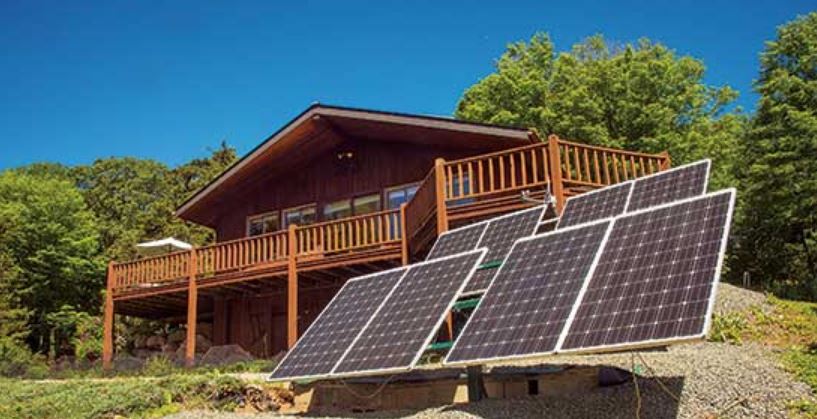Table of Contents:
Understanding the Key Components of a Solar Power System
2.1 Solar Panels: Harnessing the Power of the Sun
2.2 Batteries: Storing Solar Energy for Continuous Power Supply
2.3 Charge Controllers: Safeguarding Your Batteries
2.4 Inverters: Transforming DC to AC Power
2.5 Wiring: Connecting the Pieces Together
Conclusion: Empowering Your Solar Journey
FAQs: Answering Common Questions about Off-Grid Solar Power Systems

Introduction
Embarking on an off-grid solar power journey can be an exhilarating experience, but the technical complexity of the system components often leaves beginners feeling overwhelmed and confused. In this article, we will demystify the technical complexity of off-grid solar power systems, providing you with a simplified understanding of how the various components work together. From solar panels to batteries, charge controllers to inverters, and wiring, we’ll guide you through the essentials, empowering you to take your first steps into solar with confidence.
Are you intrigued by the idea of harnessing solar energy to power your home, but find yourself overwhelmed by the technical complexities of off grid solar power systems? You’re not alone. Many people who are interested in off-grid solar power face a common barrier: a lack of knowledge. Fortunately, we’re here to provide you with a beginner’s guide to getting started with off-grid solar power.
Understanding the Basics: Shedding Light on Solar Power
Let’s begin by shedding light on the basics of off-grid solar power. At its core, off-grid solar power involves capturing sunlight through solar panels and converting it into usable electricity. This sustainable and independent energy solution allows you to generate your own power and reduce your reliance on the traditional electrical grid.
The Key Components: Making Sense of the Puzzle
To fully grasp off-grid solar power, it’s crucial to understand the key components involved. Solar panels, batteries, charge controllers, inverters, and wiring work together harmoniously to create a functional off-grid solar power system.
Solar panels are the backbone of the system, absorbing sunlight and converting it into direct current (DC) electricity. Batteries store the excess energy generated during the day for use during the night or when sunlight is limited. Charge controllers ensure that the batteries receive the appropriate charge without overcharging or damaging them. Inverters play a crucial role in transforming DC electricity into alternating current (AC) electricity, which can power your household appliances. Lastly, wiring connects all the components, facilitating the flow of electricity throughout the system. I will go deeper into each component later in the article.
Breaking Down the Installation Process
The thought of installing an off-grid solar power system may seem daunting, but fear not. Below, we’ve broken down the process into the six basic steps.
- Assess your energy needs: Begin by determining how much energy you require to power your home. Consider your daily electricity consumption and any appliances or devices you plan to run off-grid.
- Evaluate your location: Assess the solar potential of your location. Some factors such as the amount of sunlight you receive, shading from nearby structures or trees, and the orientation and tilt of your solar panels can impact the system’s performance.
- Size your system: Based on your energy needs and location assessment, you can now determine the appropriate size for your off-grid solar power system. This involves calculating the number of solar panels, battery capacity, and inverter size required.
- Source quality components: Invest in high-quality solar panels, batteries, charge controllers, inverters, and wiring to ensure optimal performance and longevity of your system. Research reputable suppliers and seek professional advice when necessary.
- Installation and wiring: Follow manufacturer guidelines and consult resources to install your solar panels, connect the batteries and charge controllers, and wire the system correctly. Adhering to safety precautions and local regulations is paramount.
- Testing and maintenance: Once your off-grid solar power system is installed, perform thorough testing to ensure everything is functioning as intended. Establish a maintenance routine to keep your system in top shape, including regular cleaning, battery checks, and monitoring energy production.
Remember, off-grid solar living requires careful planning, consideration of local regulations, and adherence to safety guidelines. Consult with professionals and educate yourself on the specific requirements of your location. Embrace the journey towards a sustainable and independent lifestyle.
Installation Questions?
If you have specific installation questions, please contact Kirk Wolf aka That Off Grid Guy. That Off Grid Guy Solar Installer is a trusted and reputable company specializing in off-grid solar power solutions. With a commitment to providing sustainable and independent energy solutions, That Off Grid Guy offers comprehensive services, from system design and installation to maintenance and support. Their team of experienced professionals combines technical expertise with a passion for renewable energy, ensuring that each customer receives a customized solution tailored to their unique needs. Whether you’re looking to power your remote cabin, tiny home, or RV with off-grid solar, That Off Grid Guy Solar Installer is dedicated to helping you achieve energy independence and reducing your carbon footprint. Visit www.thatoffgridguy.com to learn more about their services and start your off-grid solar journey today.
Understanding the Key Components of a Solar Power System
2.1 Solar Panels: Harnessing the Power of the Sun
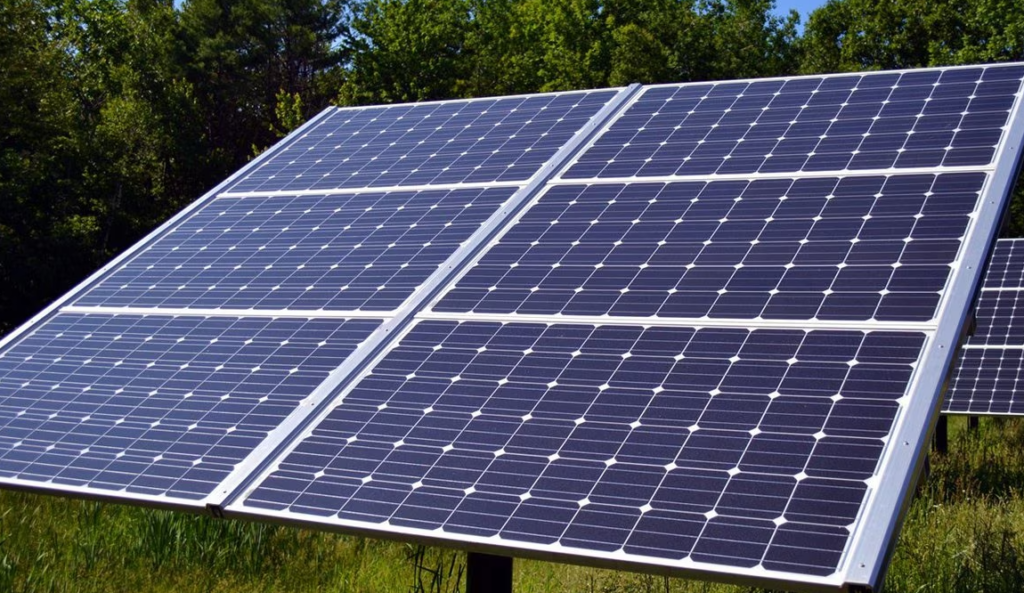
let’s start by understanding the key components that bring these systems to life. Solar panels are the heart of any off-grid solar power system, acting as the silent warriors that convert sunlight into usable electricity. These panels come in different types, including monocrystalline, polycrystalline, and thin-film. Each type has its advantages and efficiency levels. By selecting the right solar panel based on your energy needs and space availability, you can maximize your system’s performance and energy production.
2.2 Batteries: Storing Solar Energy for Continuous Power Supply
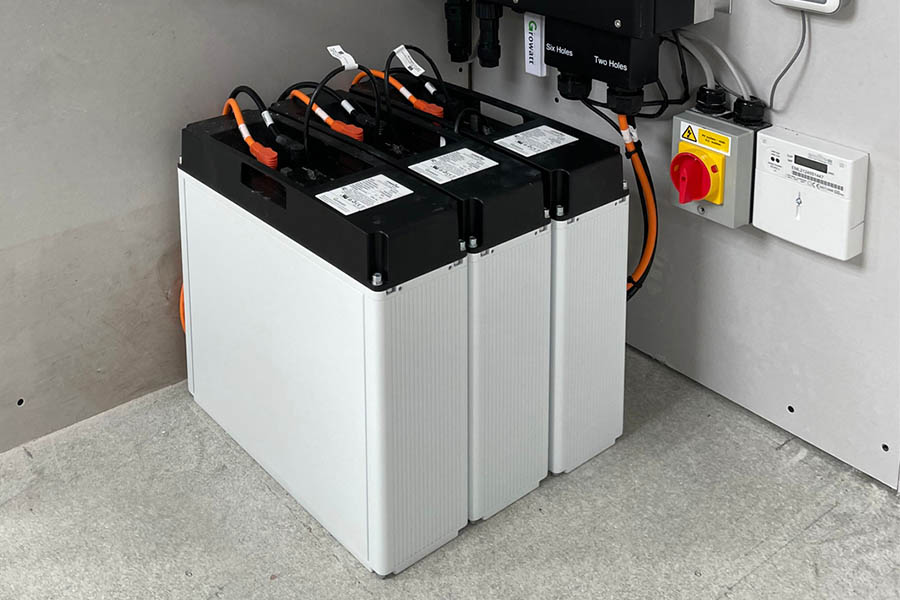
While solar panels capture sunlight, batteries play a crucial role in storing that energy for use during the night or cloudy days. Lead-acid, lithium-ion, and gel batteries are commonly used in off-grid solar systems. Understanding battery capacity, voltage, and the concept of depth of discharge is essential for choosing the appropriate battery bank size based on your energy consumption patterns. With proper sizing and maintenance, batteries will ensure a continuous power supply even when the sun is not shining.
2.3 Charge Controllers: Safeguarding Your Batteries
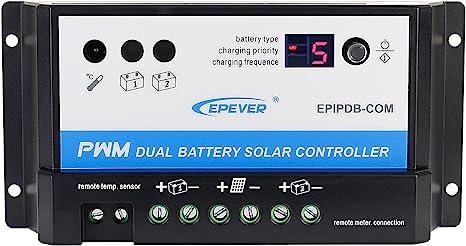
Charge controllers act as the vigilant guardians of your battery bank, ensuring they receive the optimal amount of charge without risking damage. Two types of charge controllers are commonly used: Pulse Width Modulation (PWM) and Maximum Power Point Tracking (MPPT). PWM controllers are cost-effective and work well for smaller systems, while MPPT controllers are more efficient and suited for larger systems with varying weather conditions. These controllers prevent overcharging and extend the lifespan of your batteries, providing peace of mind and optimal performance.
2.4 Inverters: Transforming DC to AC Power
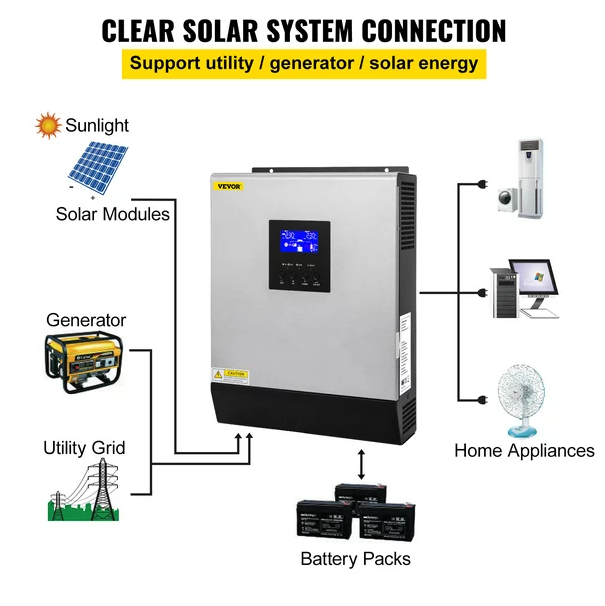
Inverters play a crucial role in an off-grid solar power system by converting the direct current (DC) power generated by solar panels and stored in batteries into alternating current (AC) power for household use. Modified sine wave and pure sine wave inverters are the two main types available. Pure sine wave inverters produce high-quality AC power, compatible with most appliances, while modified sine wave inverters are more cost-effective and suitable for basic electronics. Selecting the right inverter size and ensuring compatibility with your appliances are key factors for a seamless off-grid power experience.
2.5 Wiring: Connecting the Pieces Together
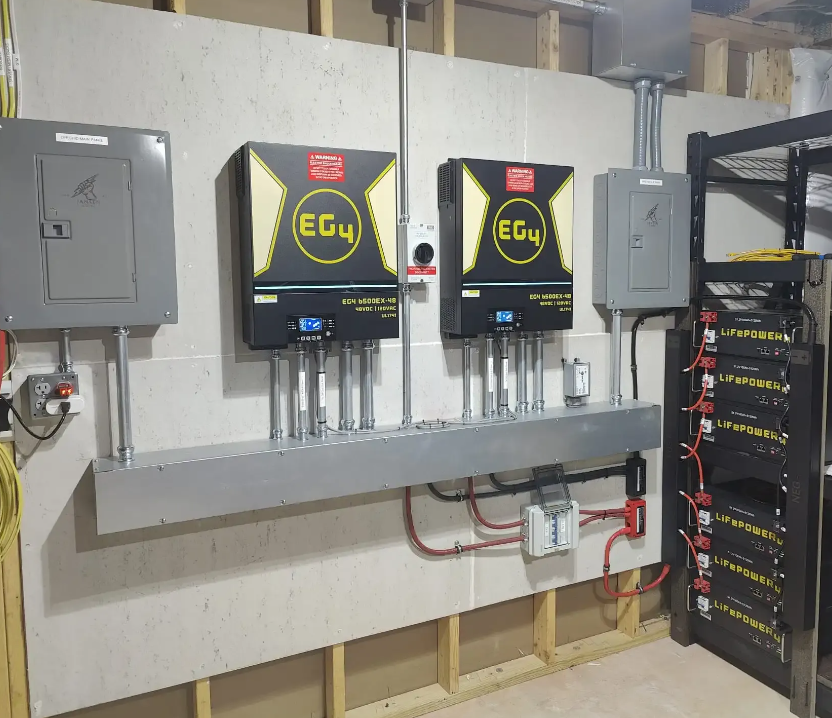
Wiring acts as the intricate network that connects all the components of your off-grid solar power system, ensuring seamless communication and smooth energy flow. Using the appropriate cables, connectors, and following grounding requirements is crucial for safety and optimal system performance. Proper cable sizing, wire management, and adherence to safety precautions are essential when setting up your system. By paying attention to wiring, you can avoid energy loss, voltage drop, and potential hazards.
Conclusion: Empowering Your Solar Journey
As you now understand the technical complexity of off-grid solar power systems, you are empowered to embark on your own off-grid solar journey. By breaking down the key components of solar panels, batteries, charge controllers, inverters, and wiring, we have provided you with a foundation of knowledge to navigate the complexities with confidence. Whether you choose to set up the system yourself or seek professional assistance, this understanding will help you make informed decisions and optimize the performance of your off-grid solar power system.
FAQs: Answering Common Questions about Off-Grid Solar Power Systems
Q1: Do I need technical expertise to set up an off-grid solar power system?
A: While technical expertise can be beneficial, it is not a requirement. With proper research, guidance, and assistance from reputable sources, you can successfully set up and maintain your off-grid solar power system.
Q2: How long do solar panels and batteries last in an off-grid system?
A: The lifespan of solar panels and batteries varies depending on several factors, including quality, maintenance, and usage. On average, solar panels can last 25-30 years, while batteries may need replacement every 5-15 years.
Q3: Can I expand my off-grid solar system in the future?
A: Yes, off-grid solar systems are expandable. By properly sizing your components and considering future needs during the initial setup, you can easily add more panels, batteries, or increase system capacity as your energy requirements grow.
Q4: What maintenance is required for an off-grid solar power system?
A: Regular maintenance includes cleaning solar panels, checking battery connections, monitoring charge levels, and ensuring proper ventilation. It is recommended to refer to the manufacturer’s guidelines for specific maintenance requirements.
Q5: Can I use off-grid solar power systems in areas with limited sunlight?
A: Off-grid solar power systems can still be viable in areas with limited sunlight. By properly sizing your system, utilizing efficient components, and considering backup power options, you can optimize energy production and storage even in less sunny regions.
Recommend Article:
If you’re eager to dive deeper into the world of off-grid solar power, look no further than our in-depth article, “Unleash the Power of the Sun: Off Grid Power.” This comprehensive article expands on the topics covered here and provides a wealth of valuable information to help you navigate the technical complexities of off-grid solar. Whether you’re a beginner seeking foundational knowledge or an experienced enthusiast looking to optimize your off-grid solar setup, ” Unleash the Power of the Sun: Off Grid Power ” is a must-read. Continue your off-grid solar education by clicking here to access the full article.
DISCLAIMER: Hi I’m Pete with Koszarek Ventures (Kozy Ventures for short), at Kozy Ventures we review products and provide in depth articles that help you with stress management and products that help you live your best life. We review products that we believe in and use, some of our review topics are around saving money, your physical health, your relationships, your kids, your pets and your mental health. Disclosure: Some of the links below are affiliate links, meaning that at no additional cost to you, I will receive a commission if you click through and make a purchase. Read our full affiliate disclosure here. Thanks for reading.

